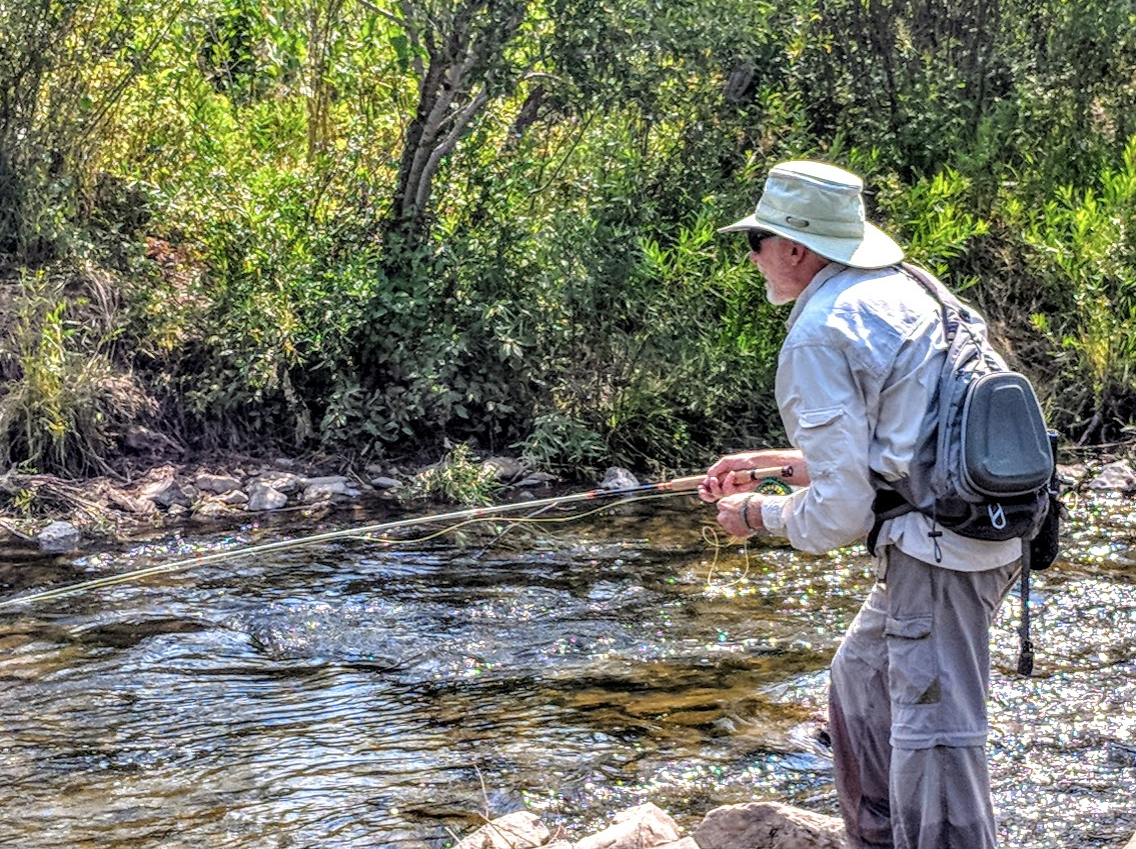Mike Sepelak fishes the Redington Butterstick on a remote Idaho freestoner for native cutthroat trout. Photo by Chris Hunt.
When I unzipped the bright orange rod tube containing the new Redington Butterstick and slowly lifted out the three-piece length of snazzy white fiberglass, I swear I heard the trumpets warming up for a sweet rendition of Kool and Gang’s “Celebration.”
The throwback design on the updated version of Redington’s signature glass fly rod transported me from the edge of British Columbia’s upper Elk River to that groovy record store in downtown Longview, Texas, where album covers for vinyl records were almost as trendy as the music they protected.
“Bam!” I thought to myself. “This is going to be sweet.”
I love a good glass fly rod for smaller water and delicate flies in need of delicate presentations—crafted right, these noodles are so much fun to fish with. The Butterstick, like it’s earlier model, doesn’t disappoint. It’s light and slow and it bends so appreciatively, both when casting and and when fighting a fish, that it just makes me smile. It’s kind of like slipping on an old pair of shoes—comfortable and familiar.
But I think it’s more than that, at least in the case of the Butterstick. Now, several years after launching it’s first version, the Butterstick has become a brand of its own. It’s light and easy to handle. It comes with the no-fuss cork friction reel seat (and I paired it with the no-frills Redington ZERO reel, which is ideal for small trout water), and it has that “old-school” feel that many of us first experienced with brands like Fenwick or Eagle Claw back when these were the fly rods our fathers or grandfather put in our hands for the first time.
I fished the 4-weight version of the Butterstick, and, honestly, I might have been a bit outgunned by the Elk’s big cutthroats. But it placed small dry flies (and the occasional fat hopper, too) right where I wanted them, and when a 20-inch cutthroat hit, the rod-bend started just above the handle, allowing me to feel every headshake and run from these feisty native trout. The smiles forced themselves onto my lips—there was no stopping them. And, coupled with the drag-free ZERO that clicks so appreciatively when a fish takes line, the smiles turned into full-on giggles.
Later in the same trip, I ended up on northern Saskatchewan’s Wheeler River with a few hours to kill chasing big Arctic grayling while on a pike trip with family and friends. The Wheeler is big water as it leaves Russell Lake, and the grayling aren’t slouches, either. Using the 7-foot, 6-inch Butterstick, I felt every pulse from decidedly big sail-finned grayling that, unlike their cutthroat brethren, leaped from the water, cartwheeled and behaved every bit like baby tarpon in some Yucatan slough.
More smiles. More giggles. The Butterstick is, very simply put, fun. And, at $279, it’s not a bank-breaker.
I suppose there are practical uses for Redington’s glass product— like spring creeks, where stealth and delicate presentations are a must for fly-wary trout. I haven’t used the rod in these more technical situations yet, where using it as it was intended might actually improve results. But when and where haven’t really been priorities for me. I simply love casting glass. It’s slow and uber-responsive. It does require a technically sound cast, or you’ll end up with a lot of rod wiggle and line slap (speaking of which, I’d recommend to Redington that the next version comes with a reconfigured guide array—the stripping guide on this latest model feel like it’s too far up the blank).
But when you get it right … well … it casts like a stick of butter.
— Chris Hunt



